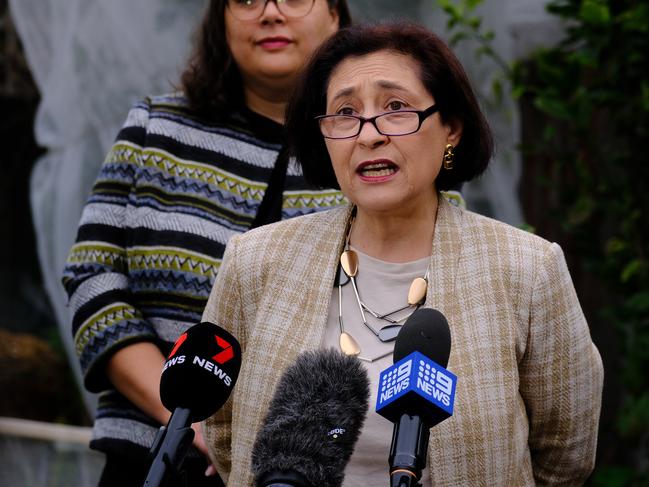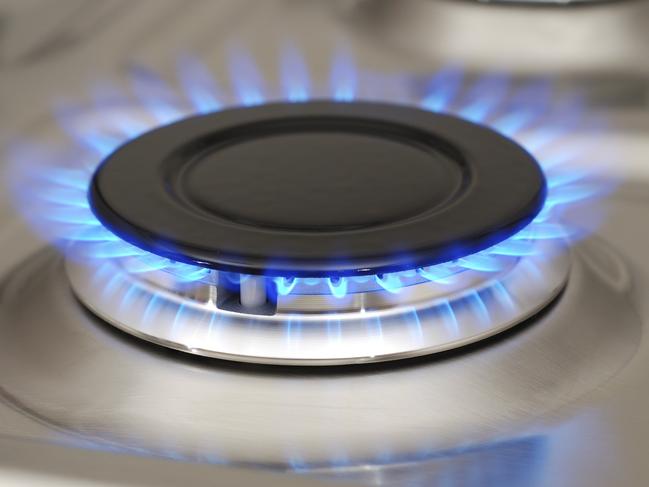Gas to run short in Victoria over winter, Australian Energy Market Operator warns
As Victoria’s temperatures plunge, critical gas supply shortages are looming for the next three months, the Australian Energy Market Operator has warned.
Victoria
Don't miss out on the headlines from Victoria. Followed categories will be added to My News.
Critical gas supply shortages are set to hit Victoria over winter according to a new threat alert by the nation’s market regulator.
Despite the warning, Energy Minister Lily D’Ambrosio hosed down concerns and said there is no need to panic yet.
However in an alert made public on Thursday, the Australian Energy Market Operator (AEMO) warned “recent gas supply and demand trends for the southern jurisdictions (NSW, ACT, VIC, SA and TAS) indicate there is the potential for gas supply shortfalls due to the depletion of southern storage inventories”.
“The supply of gas in all or part of the east coast gas system may be inadequate to meet demand,” the warning notice said.
The market operator said the likely duration of the shortage threat is from June 19 until September 30.

Ms D’Ambrosio on Thursday morning said she was closely monitoring the situation but insisted she had no reason to be concerned.
“The market operator has not given me any cause for concern that there will be insufficient supplies for this winter but we monitor it,” she said.
“Certainly we’ve had a very, very cold few days and that’s meant that Victorians are using more gas to keep themselves warm and we want to make sure that they stay warm.”
Ms D’Ambrosio said the alert notice was a “signal to the market” to essentially request more reserves.
“The alerts they’ve issued are about ensuring they can source alternative or additional sources of gas to ensure there is sufficient supply for this period of time,” she said.
“I’ve had no issues that AEMO has raised with me ... but we’ll continue to monitor this, of course.”

An AEMO spokesman said it had identified a potential risk to gas storage levels in parts of the east coast.
“This is due to the rate of Iona gas storage depletion, disruptions to Longford production, and high gas generation demand,” he said.
“The high gas fired electricity generation demand is in part due to low wind and solar generation.
“AEMO will continue to work with governments and industry to manage gas supply.”
Australian Pipelines and Gas Association chief executive Steve Davies said the industry had been warning about looming shortfalls for half a decade.
“Little has been done to remedy it — the opposite has occurred and businesses are being asked to pay the price,” he said.
“In the first 19 days of June, gas-powered generation in Victoria has already been used as much as the entire winter of 2023, indicating how important it is when it’s desperately needed. But you can’t have gas generation without supply.
“The extreme lows in renewable generation, particularly wind yields, have meant gas-powered generation has picked up a significantly larger load to keep the lights on and ensure electric homes can remain heated.”

Opposition energy spokesman David Davis said the warning was a “report card on Labor’s failure”.
“Labor over ten years in power has botched energy policy — not one new exploration permit has been issued for onshore conventional gas across their decade in power,” he said.
“The AEMO warning today on the risks of gas supply to Victoria is a fail against the Andrews/Allan Labor government and its energy policy.
“Their war on gas – their hatred of gas – has left Victorian industry and households vulnerable.
“Gas will have a critical role in managing the intermittent nature of renewable energy supply as shown by the low percentage of renewables in the system over the last few days where coal and gas have carried the load.”

Federal opposition energy spokesman Ted O’Brien said electricity and gas shortfalls under Labor had resulted in Australians paying some of the world’s most expensive power bills, all the while being threatened with blackouts.
“Only Labor could manage to run out of gas in a country awash with the important transition fuel,” Mr O’Brien said.
“These dire warnings are a direct result of Labor’s all-eggs-in-one-basket ‘renewables only’ approach to energy which is suffocating gas and forcing 90 per cent of Australia’s 24/7 reliable baseload energy out of the grid over the next decade.
“Australia needs a balanced mix of technologies working together in our grid if we are to decarbonise while keeping the lights on and prices down, including renewables, gas and zero-emissions nuclear energy as coal exits the grid.”
Last year AEMO warned the state’s outlook has deteriorated dramatically in just six months, warning supply reliability will become even more compromised later this decade.
In a damning report it singled Victoria as the most at risk state, forecasting the closure of Energy Australia’s Yallourn power station by 2027-28 would exacerbate the state’s issues.
Supply shortfalls are also expected to drive higher wholesale prices that will flow through to households and businesses, leading to further hikes in Victorians’ power bills.
AEMO chief Daniel Westerman last year described the situation as increasingly urgent.
“Quite simply, Australia‘s energy transition is happening at pace,” he said at the time.
“Our coal fired power stations are closing down at the same time as demand for electricity is increasing and without urgent and ongoing investment in new sources of electricity, and the transmission that we need to connect it to consumers – there are significant risks to reliability.”
Australian Energy Producers chief executive Samantha McCulloch said gas producers were doing everything they could to meet the heightened demand, keep Australian households warm and businesses running.
Ms McCulloch said the latest warning reinforced the urgent need for investment in new gas supply to prevent shortfalls from becoming the “new normal”.
“Australia has abundant gas reserves but needs the political will to restore investment confidence and ensure timely approvals for much-needed new gas supply,” she said.
“Regulatory certainty and stability is critical to support investment in the next generation of gas supply, all the way from exploration to production.”



